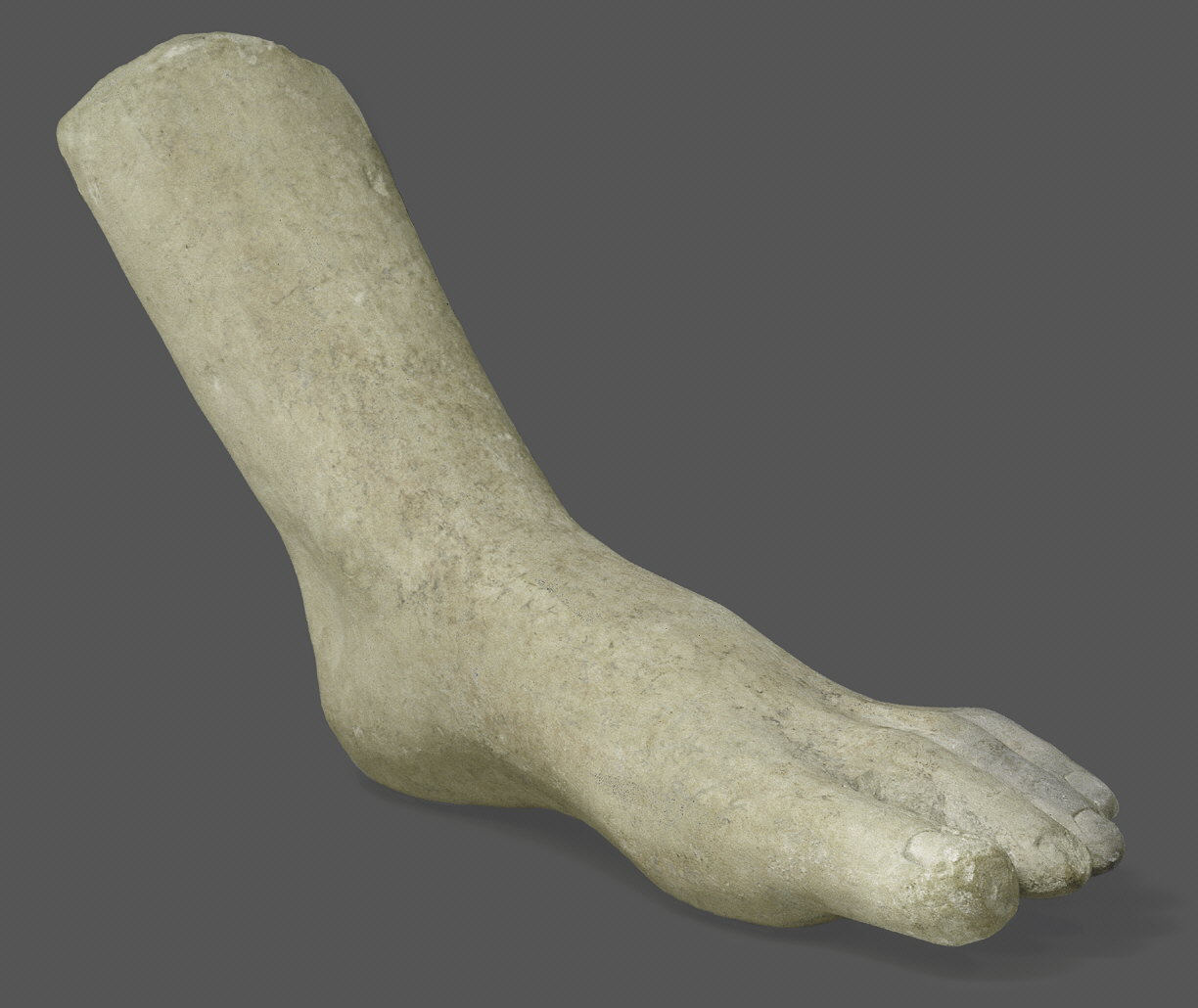Limestone lower left leg
Representations of parts of the body in stone were an established type of dedication in the Greek world from the fourth century B.C. on. Their purpose was to solicit divine help for a cure or to give thanks for a successful cure. Anatomical votive objects are well-known from Cyprus, and further examples are on display nearby in the case devoted to ancient medicine. While this lower left leg and foot could conceivably have belonged to a statue of another material with limbs of stone, it is more likely to have been an offering.
This image cannot be enlarged, viewed at full screen, or downloaded.
This artwork is meant to be viewed from right to left. Scroll left to view more.





